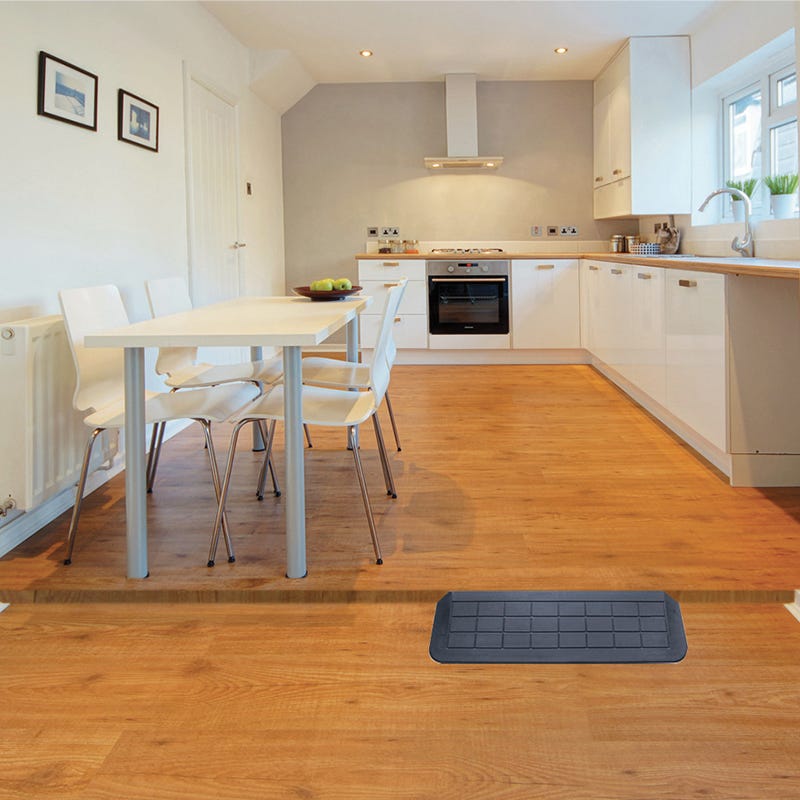We often talk about the big-ticket mobility accessories we provide at CareCo such as bath lifts, riser recliners and mobility scooters. However, there are smaller adjustments you can make to your home to make it more mobility accessible. Here are five simple tips to help you do just that.
1. Level Things Out or Add Support
If you have steps or uneven areas of your home they can be a likely trip hazard. Places such as entrances and transitions between rooms are the most common areas with this issue. To reduce the likelihood of a fall it’s best to either level these areas out or place a stable surface nearby. If you don’t fancy renovating your home there are simple additions that can help. Ramps can be used at entrances and at other changes in height and can be very affordable, such as the Threshold Rubber Ramp. Alternatively, grab rails can be placed on walls to provide stability when taking a step.
2. Keep Things Within Reach

One of the most common causes of a fall is stretching or bending to reach something that’s just a bit to far away. To help reduce the chance of this happening it’s a good idea to place things more strategically. For those everyday items that you use regularly putting them at a good height and within accessible reach will make your home a safer place to be. For example, a pot or pan that you use frequently could be left on the stove, or clothes you wear a lot can be placed at the front of a cupboard. For out of reach items you use less you could invest in an extended grabber to help you.
3. Keep Your Home Tidy
This simple household chore can make it much easier to move around your home. Spills and clutter can be a big hazard if you have issues with balance and mobility. It’s a common occurrence for a wet patch in the kitchen or clutter left out elsewhere to result in a painful fall. To prevent this happening, it’s important to keep your home neat and tidy. The easiest way to do this is by tidying up as you go, rather than doing a big clean on the odd occasion. Not only is this less physically strenuous, but it’s easier to motivate yourself to clean up a small mess rather than sort out the whole house at once.
4. Consider a Rearrange of Furniture
If you have limited mobility then rearranging furniture is undoubtedly going to be difficult to do alone, so you may have to get some help from family or friends. However, moving your furniture around with accessibility in mind can be very beneficial. Making sure you have enough space to navigate in without bumping into corners is a big help, especially if you use a mobility aid. Also, take extra consideration for low furniture like ottomans. Additionally, consider removing any rugs, as they can bunch up or slip and are common causes of falls if you tend to shuffle with your steps.
5. Give Yourself Places to Rest
We all take a minute to rest in the living room or the bedroom when we feel fatigued or tired, but if you have mobility difficulties physical fatigue can be more sudden. By placing some chairs in corners of the house you can find a place to sit more quickly, even if you’re a long way from the living room. You can also invest in a walking aid like a tri-walker or a rollator that has a built-in seat, so you always have a place to rest no matter where you are in the house. If you live in a two-storey building this is especially useful, as you can keep one on each floor. So, if you find you have trouble moving through your home give some of these adjustments a go, they may just make that all important difference. See my OT Advice Pages for more professional advice on staying mobile at home.


 Price Match Promise
Price Match Promise
 Next day delivery, 7 days a week
Next day delivery, 7 days a week
 Nationwide Showrooms
Nationwide Showrooms
 Rated Excellent
Rated Excellent








